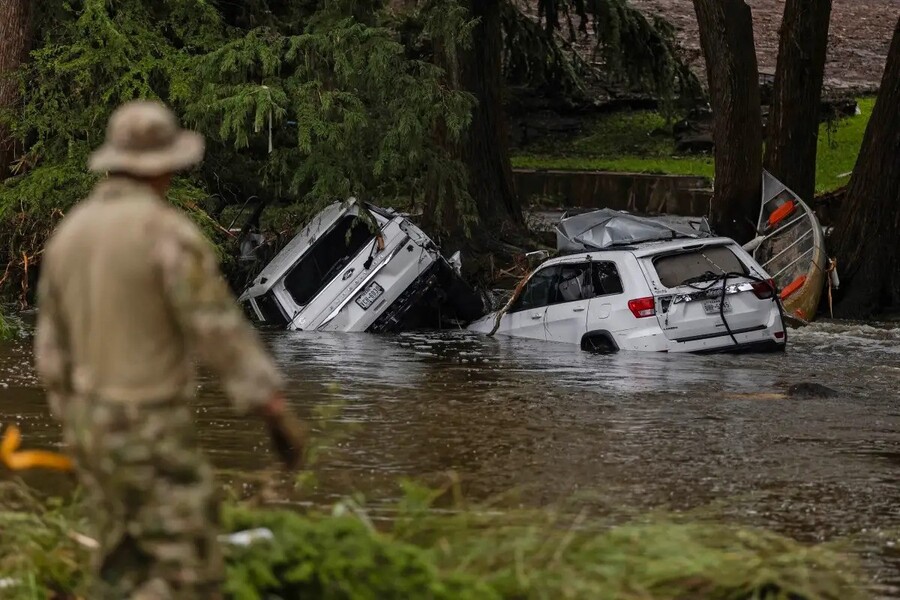In the wake of the devastating floods that swept across Texas, social media users and conspiracy theorists alike have pointed fingers at an unlikely culprit: a cloud-seeding startup known as Rainmaker. The claim? The company’s atmospheric manipulation intensified rainfall and triggered the disastrous deluge. But leading scientists are unequivocal in their response—this theory is baseless and unsupported by any scientific evidence.
Rainmaker did carry out cloud-seeding operations in the broader region days before the storm. However, according to meteorological experts, the timing and nature of the company’s work make it virtually impossible for those actions to have played any role in the rainfall that overwhelmed Texas communities.
“It’s just a complete conspiracy theory. Somebody is looking for somebody to blame,” said Bob Rauber, professor of atmospheric sciences at the University of Illinois. Katja Friedrich, an atmospheric scientist at the University of Colorado Boulder, was equally clear: “Cloud seeding had nothing to do” with the Texas floods.
Cloud seeding, a technique in use since the 1950s, involves introducing small particles—typically silver iodide—into clouds that contain super-cooled water droplets. These particles serve as artificial nuclei, causing water droplets to freeze into ice crystals. As these crystals grow, they eventually become heavy enough to fall as precipitation. The technique has primarily been employed in mountainous regions during the winter to increase snowfall and improve water supplies during the spring melt.
But while the science behind cloud seeding is sound, its real-world effects are limited. Even in optimal conditions, the amount of additional precipitation generated is modest. For example, in 2017, Rauber, Friedrich, and a team of researchers conducted a detailed study in Idaho, seeding clouds for just over two hours. The result was an estimated 186 million gallons of additional precipitation—a seemingly large number, but minuscule compared to the scale of a major storm system.
“When we talk about that huge storm that occurred with the flooding [in Texas], we’re talking about the atmosphere processing trillions of gallons of water,” Rauber noted. In that context, cloud seeding’s contribution would be little more than a statistical blip.
Moreover, there are compelling scientific reasons to rule out any connection between Rainmaker’s operations and the flooding:
First, the air mass that Rainmaker targeted had likely moved hundreds of miles by the time the storm developed. “The air that was over that area two days before was probably somewhere over Canada by the time that storm occurred,” Rauber explained.
Second, the type of clouds that Rainmaker may have targeted—presumably cumulus clouds common in Texas summers—are not ideal candidates for seeding. Unlike the slow-moving orographic clouds found near mountain ranges, Texas thunderstorms are fast-developing and already highly efficient at generating heavy rain on their own.
“Those clouds are very efficient,” Rauber said. “Seeding those clouds is not going to do anything.”
Even under ideal conditions, seeding such clouds would result in negligible additional rainfall. “The amount of rain that comes out of those seeded clouds is small,” he added.
Despite the clarity from experts, the cloud-seeding theory has gained traction in some corners of the internet, illustrating how misinformation can flourish in the absence of clear understanding. Disasters—especially sudden and overwhelming ones—often leave people searching for someone or something to blame. But turning to pseudoscience can be both misleading and harmful.
Experts emphasize that the real causes of the Texas floods lie in more conventional meteorological factors. An unusually moist atmosphere, driven by warm Gulf air and slow-moving storm systems, dumped massive amounts of rain over already saturated ground. It was a natural disaster, not a manufactured one.
Cloud seeding, while useful in specific contexts—such as boosting snowpack in the Rockies or enhancing rainfall in drought-prone areas—cannot turn an ordinary weather system into a catastrophe. Its effects are small-scale, short-lived, and tightly controlled.
Idaho Power, a utility company that uses cloud seeding to increase winter snowfall, has found the practice cost-effective for hydroelectric power generation. But even they acknowledge that the scale of their results is modest and localized.
In Texas, the storms that caused the flooding involved atmospheric dynamics on a massive scale, far beyond what cloud seeding could influence.
Blaming Rainmaker or cloud-seeding technology for the floods distracts from more urgent conversations, such as improving disaster preparedness, reinforcing critical infrastructure, and addressing the role of climate change in increasing the frequency and intensity of extreme weather events.
Climate scientists warn that as the planet warms, the likelihood of such events will only rise. Warmer air holds more moisture, leading to heavier downpours. Urban development without adequate drainage compounds the risk. These are the real issues communities must confront, not unsupported theories rooted in fear and confusion.
As communities in Texas begin the long process of recovery, the public is urged to rely on scientifically sound information and remain wary of viral misinformation. The truth, though more complex than a conspiracy theory, is the key to understanding—and preventing—future tragedies.







